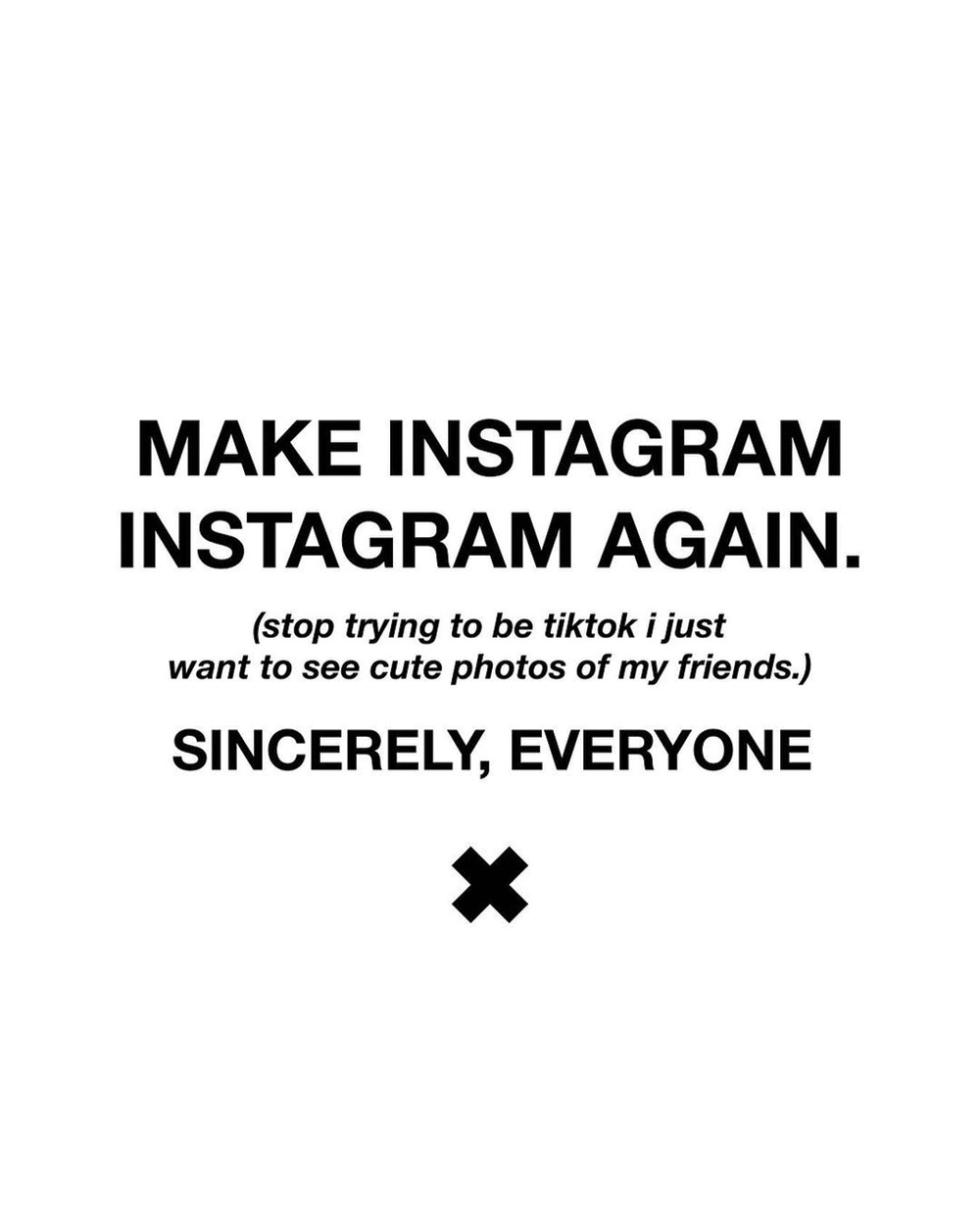
Tati Bruenin/@Illumitati/Instagram

Instagram is having an identity crisis. The once-cool social platform that helped usher in the rise of the “influencer” signaled an impending shift last summer when its chief, Adam Mosseri, proclaimed Instagram was “no longer a photo-sharing app.”
Citing the “stiff competition” coming from TikTok and YouTube, the executive said Instagram would lean into video and share more recommended posts from accounts that users don’t follow — the latter of which would work in tandem with the platform’s effort to promote Reels from creators not followed by users.
While Meta, the parent company of Instagram and Facebook, still retains the majority of digital advertising dollars, TikTok has surpassed both apps in attracting — and holding — its users’ attention on a daily basis. According to Insider Intelligence, TikTok users in the U.S. spend an average 45.8 minutes per day scrolling on the app, while Facebook and Instagram users typically spend 30.1 minutes on those platforms.
With TikTok breathing down its neck and becoming the go-to app for viral trends, Instagram has spent the past year heavily promoting its shortform video product, Reels, on users’ feeds and encouraging creators to pivot to the product with a Reels bonus program and the potential for higher engagement.
Some creators have taken the shortform video shift in stride, but others who still prefer to use Instagram as a photo-sharing app — and have built their businesses by doing so — have seen a sharp decline in engagement. According to a recent study of 81 million Instagram posts by the social media marketing platform Later, average engagement for non-Reels posts has declined by 44 percent since 2019.

Tati Bruenin/@Illumitati/Instagram
The discontent came to a head July 25, when Instagram was forced to temporarily pull back its Reels-emphasizing product features after high-profile users like Kylie Jenner and Kim Kardashian shared a petition created by photographer Tati Bruening to their hundreds of millions of followers. It demanded that Instagram “stop trying to be TikTok” and revert to emphasizing posts from accounts users actually follow. Mosseri spent the latter half of that week doing damage control — including a Twitter spar with Chrissy Teigen — ultimately admitting the features weren’t adequate and assuring users that Instagram will still support photos, even as he asserted videos are its future.
“People are frustrated and the usage data isn’t great,” Mosseri told reporter Casey Newton in his newsletter The Platformer on July 28. “We need to take a big step back, regroup and figure out how we want to move forward.”
Rolling back the contested changes seems to only be temporary as the Meta-owned platform figures out how to retain market share and relevance. Meta CEO Mark Zuckerberg, who has also shape-shifted Facebook into a “metaverse” company with big promises but limited tangible results thus far, issued his support for Reels during a July 27 earnings call. He said he’s confident Reels will soon monetize at the same rate as posts and stories on Facebook and Instagram.
For creators who make their living on social media, the high likelihood that Instagram’s Reels-heavy features might return in another form in the future could have a serious impact on their businesses. Aside from the sense that posts from friends and family — which could include major life updates like marriages and pregnancies — have become buried under Reels and recommended posts, Instagram’s TikTok pivot could tank high engagement numbers that come from close relationships with followers, and those figures inform dollar amounts for brand deals and sponsorships.

Matt Winkelmeyer/Getty Images; David Ramos/Getty Images
“This is a big deal for creators because it signals a deeper strategic shift inside Meta, which is essentially moving the entire Meta network from a follower-based priority model to an algorithmically curated-based priority model,” Jack Conte, CEO of Patreon, said in a video shared July 27. “We spent years investing in these platforms, building followers, building communities, and these changes remind us once again these are not our followers. These are Facebook’s users.”
Despite the instability, creators like Kojo Sarfo, a nurse practitioner with 241,000 followers on Instagram and 2.3 million followers on TikTok, are moving forward either way. “I don’t want to allow myself to [think] that I’m controlled by the algorithms,” Sarfo tells The Hollywood Reporter. A fan of Reels who isn’t changing his approach but has hired a full-time videographer, Sarfo adds, “I’ll just put out the content and, in my head, I feel like the people who need to see it will see it.”
Chris Gardner contributed to this report.
This story first appeared in the Aug. 3 issue of The Hollywood Reporter magazine. Click here to subscribe.